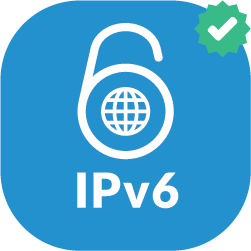Why is IPv6 important?
In short, we will relatively soon run out of IP addresses in IPv4, which is the fourth version of the Internet Protocol.
The world needs more available IP addresses – and with IoT (Internet of Things) that need will only increase in the future. That is why IPv6 was designed and ratified in 2017.
So what is the difference between IPv4 and IPv6, you might ask?
As you can see from the examples below, an IP address in IPv6 has more characters and includes both numbers and letters. This means that the combinations are almost endless.
IP address with IPv4: 192.168.100.250
IP address with IPv6: 2001:db8:0012:0aq3:0ff4:ff00:42oi:8329
In other words: We won’t run out of IP addresses anytime soon using IPv6.
That is why we recommend our customers to move from IPv4 to IPv6. No matter what, the upgrade may soon become necessary due to the finite amount of IP addresses available with IPv4.
IPv6 is fully supported in the Enterprise Ready JetAdvice Edge.
